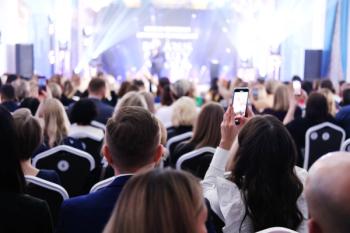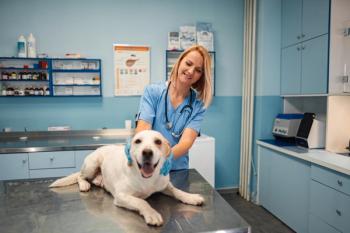
Photo gallery: 9 rehab tools for pets--and people too!
Check out these 9 tools that help technicians and occupational therapists offer topnotch care.
1. Therabands are widely used in both animal and human rehabilitation. In veterinary medicine we use them to work abduction in the hind leg as well as holding the rear leg in position when standing an animal that has weakened hind quarters and tends to splay out.
In human medicine they are used for a variety of upper and lower body exercises. The main goal of Therabands is to strengthen and condition the muscles in a way that does not apply a lot of external weight on the body.
2. Peanut balls are widely used in both veterinary medicine and human medicine. In the veterinary world peanut balls can be used to have dogs lie across the ball and stabilize them so you can work the rear and front legs. They are also used as a core strengthening device where the dog is actually placed on top of the ball with the rehab therapist holding each side gently while the dog balances herself.
In human medicine these balls can be used for core strengthening as well. The child is placed on the ball, straddling it, and asked to perform a series of exercises. The ball is mostly used for sensory input though. The child lies down and the ball is rolled over his or her body with pressure several times. The child then rolls over and the ball is rolled over again. Many children with sensory processing disorders or autism like this treatment.
3. Shelf Liner that has a gripping texture is amazingly versatile. It is used in veterinary medicine to hold x-ray plates in place or to stop blankets and towels in kennels from sliding around.
In human rehab we use it to keep wheelchair cushions from sliding out from under the client or to make a gripping texture on the floor before an unsteady person attempts to stand up. We also use it for school-age children who need to keep slant boards or other adaptations from sliding off of their desks.
4. Harnesses. We love them! In veterinary medicine we use them to maintain control of an ambulatory animal without pulling on his or her neck. We also use them in rehab to help a patient stay upright after surgery or an injury.
In human medicine we use harnesses and slings to help move bariatric clients from their beds to a wheelchair or to the toilet. It is easy to move patients who are 600 pounds or more by simply putting them in one and raising and then dropping them while guiding their movements.
5. Hoyer lift. It's used in veterinary medicine to hold an animal that can't stand into a standing position so that he or she can receive rehab while weight bearing on the legs. In human medicine the Hoyer lift is what is attached to a harness or sling to elevate people past the height of the wheelchair and then help lower them to the chair for a safe transfer.
6. Therapeutic ultrasound is used by both human and veterinary medicine to alleviate pain and to help break up scar tissue after surgery. Massage can also help, and both veterinary and human medicine use it. But therapeutic ultrasound works more deeply into the tissue.
7. Airex pads. These help challenge the balance of patients and make them able to stand on land with more strength and harmony. In veterinary medicine we stand a dog on either its fore or rear limbs-but occasionally for a smaller animal all four limbs-to help the patient regain strength and balance.
In human medicine we stand a person on the pad and do exercises-balloon batting or bean bag throwing to challenge the person's equilibrium.
8. Vet wrap and socks are a normal part of life in veterinary medicine. They help keep a dog from licking a wound. In rehab they are also used to prevent legs of paralyzed dogs from developing deep wounds after being dragged across the ground. They are covering the foot, which helps them prevent wounds.
In human medicine the socks always have gripper bottoms, and they are used to prevent falls after an injury while the patient is doing balance or ambulatory work.
9. Hair scrunchies are useful in veterinary rehab to encourage dogs to paw at their mouths to work the shoulder muscles after an injury. In human medicine we often use stimulants to encourage specific motions as well. Brightly colored rings on a long tube offer patients with dementia the encouragement to grab hold of them and open their shoulder joints as they move them along the tube.
Newsletter
From exam room tips to practice management insights, get trusted veterinary news delivered straight to your inbox—subscribe to dvm360.






